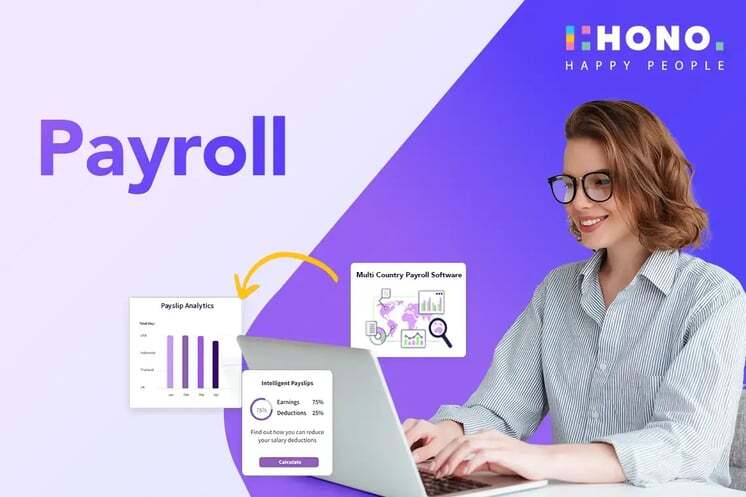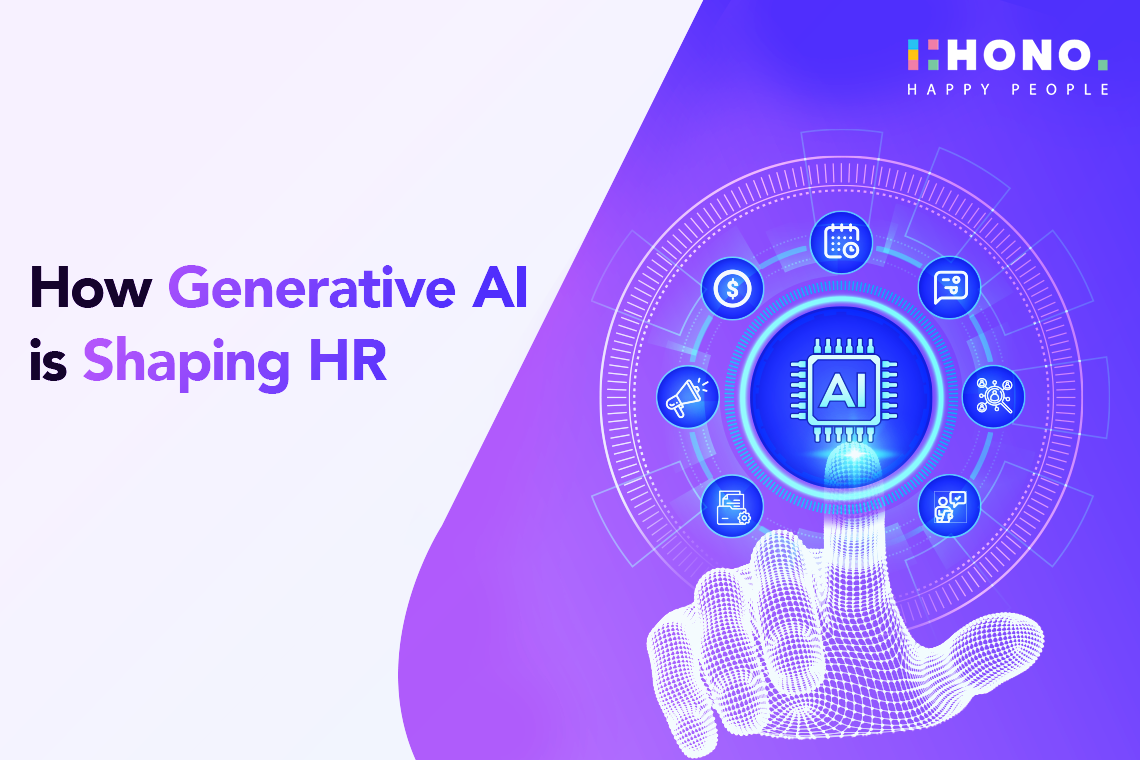According to a recent Gartner survey, a resounding 46% of HR leaders have unequivocally declared HR technology as their top priority. This revelation underscores the role technology plays in revolutionizing the way organizations manage their workforce. Technology is a game-changer, and one standout player is automation. This powerful tool is making a real difference, bringing about concrete improvements. For instance, it has successfully cut down payroll mistakes, compliance issues, and manual errors by an impressive 15%. But its influence goes beyond just making things run smoother. Automation is like a superhero for organizations, giving them a substantial 10% increase in employee performance. So, it's not just about fixing processes; it is about boosting the heart of what makes a company successful—its people.
Automating Payroll - A Step Towards Efficient HR Management
5 mins

What are the Benefits of Automating Payroll
- Precision in Calculations: Automated payroll guarantees accurate calculations and strict compliance with regulations, eliminating errors common in manual processing.
- Time and Cost Efficiency: Payroll automation drastically cuts down on time and costs involved in processing, allowing resources to be redirected towards more strategic HR endeavours.
- Enhanced Salary Disbursements: Automated processes ensure salaries are disbursed on time and without errors, leading to increased satisfaction and trust among employees.
- Reduced Compliance Risks: Automation minimizes the risk of regulatory non-compliance, ensuring that payroll processes align with legal requirements.
- Quick Issue Resolution: Automated systems facilitate faster resolution of payroll-related issues, preventing delays and ensuring swift action on discrepancies.
- Enhanced Record-Keeping: Payroll automation maintains accurate and organized records, streamlining auditing processes and providing a comprehensive overview of payroll history.
Learn more about the Benefits payroll system 
What are the Key Features of Automated Payroll Systems
Automated payroll systems offer an array of indispensable features that revolutionize the payroll management landscape. Firstly, these systems seamlessly integrate with time and attendance tracking, ensuring precise calculation of working hours. This integration not only enhances accuracy but also minimizes discrepancies in payroll processing. Additionally, automated payroll systems include tax compliance automation features, simplifying intricate tax calculations and significantly reducing the risk of non-compliance. This ensures that organizations stay aligned with tax regulations, avoiding potential legal complications.
Going beyond fundamental features, automated payroll systems boast advanced functionality. They provide customizable reporting and analytics capabilities, allowing organizations to tailor reports to their specific needs. This flexibility empowers businesses to gain deep insights into payroll trends and patterns. Moreover, automated systems often come with enhanced security measures, safeguarding sensitive payroll data. The ability to set role-based access controls adds an extra layer of protection. Furthermore, integration with other HR software and modules creates a seamless and comprehensive HR ecosystem, streamlining overall human resource management.
 Know more about the key Features of payroll software
Know more about the key Features of payroll software
What are the 5 Key Challenges in Implementing Payroll Automation
- Implementing payroll automation poses challenges in ensuring the security and privacy of employee data, demanding robust protective measures.
- Comprehensive training for employees is crucial for the successful adoption of automated payroll, facilitating a smooth transition from manual processes.
- Seamless integration with existing HR systems is vital to achieve a unified approach in HR management, avoiding conflicts and streamlining processes.
- Adapting to the change brought by automated payroll requires effective communication to highlight its advantages, minimizing resistance among employees.
- Ensuring compliance with tax regulations and legal considerations is a significant challenge, emphasizing the need for thorough testing to avoid non-compliance issues.
How to Implement Payroll Automation in Your Organization
Organizations embarking on the journey of payroll automation can follow a step-by-step guide to ensure a seamless transition and optimal utilization of the automated system. This involves carefully planning each phase of implementation, from system selection to employee training, to guarantee a successful integration of payroll automation. The step-by-step guide provides a roadmap for organizations, emphasizing key considerations like scalability, customization, and integration capabilities when choosing the appropriate payroll automation software. Robust employee communication and training programs are also crucial during this process to empower staff with the necessary skills to navigate and utilize the new automated payroll system effectively.
Know more: Implementation of Payroll software
Overcoming Resistance to Change
Recognizing and managing employee resistance is pivotal in the successful adoption of automated payroll systems. Organizations can employ strategic approaches to address concerns and highlight the positive outcomes associated with payroll automation. Effectively communicating the benefits, including increased efficiency, accuracy, and time savings, becomes instrumental in garnering employee support. Emphasizing the advantages of the automated payroll system helps alleviate apprehensions, making it easier for employees to embrace the change positively. By implementing strategies to manage resistance and conveying the advantages, organizations pave the way for a smoother transition to automated payroll processes.
Embracing the digital transformation of HR processes, payroll automation revolutionizes traditional payroll systems by incorporating advanced technologies. This paradigm shift offers organizations a streamlined and efficient method for managing payroll tasks, eliminating manual processes and reducing the risk of errors. The importance of efficiency in HR management cannot be overstated. HONO Payroll automation plays an important role in enhancing operational efficiency, allowing HR professionals to focus on strategic initiatives rather than getting entangled in time-consuming manual payroll processes.
Request A Demo Now!
Frequently Asked Questions
HCM software automates and streamlines HR processes, making them more efficient and accurate. It provides a centralized platform for managing employee data, tracking performance, facilitating talent acquisition, and improving employee engagement. By leveraging HR management software, organizations can save time, reduce administrative burdens, make data-driven decisions, and enhance overall HR operations.
AI-driven HONO is considered the best HR software due to its innovative use of Artificial Intelligence (AI) to streamline and enhance HR processes. Here’s why. It provides actionable, data-driven insights that enable HR professionals to make informed decisions, improving overall organizational effectiveness and strategic planning. HONO automates repetitive and time-consuming HR tasks, allowing HR personnel to focus on more strategic activities, thereby increasing overall productivity and efficiency. HONO is scalable and adaptable, catering to the evolving needs of organizations, regardless of their size or industry.
Choosing the right Employee Management Software involves considering several factors to ensure it meets the organization’s needs. Here’s a guide to help you choose. Clearly define what you need the HRMS software to achieve, considering aspects like attendance tracking, performance management, and employee development. Determine a budget considering both the initial cost and ongoing expenses like subscription fees, updates, and support. Ensure the HCM software integrates seamlessly with other systems and tools used in your organization, such as payroll and attendance systems. Opt for cloud HCM with an intuitive and user-friendly interface to ensure ease of use for both HR personnel and employees. Assess the human capital management solution's security features and its ability to comply with relevant laws and regulations to protect sensitive employee data. By considering the above factors and conducting thorough research, you can select an Employee Management Software that aligns with your organizational goals and enhances overall workforce management.
.png?width=70&height=70&name=Team%20HONO%20logo-01%20(1).png)
Team HONO








.jpg)
